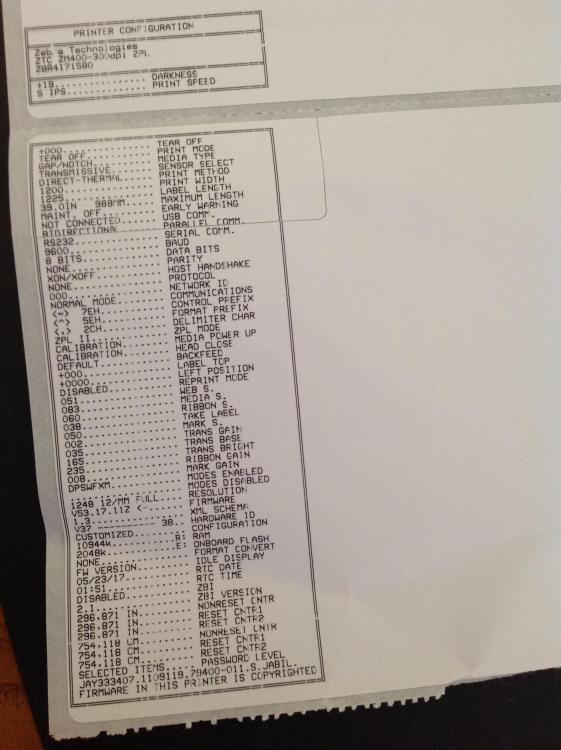Posts posted by MaryPDX
-
-
-
On 5/31/2018 at 10:36 AM, cswickard said:
Yes to not wanting to worry about WB, but some of this is talking about actual transfusions in the field where fresh (<14 days) WB would be very useful and much easier to deal with for a field team. I have also heard that some Trauma centers have a procedure where FFP and pRBCs and all get mixed together as they are being transfused(?!!?) I have no clue how that works, but seems like it would almost be safer to give a WB unit than that procedure?!?
Fresh FFP with more functioning Coag factors logically seems better, but maybe a fresh WB has enough to keep things going. I can't see us managing this though - the WB inventory, even with returning it for Packed RBC production, would kill us. Most of our "traumas" to date have used fewer than 4 units. It will be interesting to follow this trend.
By the way - does anyone know if the WB is Leukocyte reduced? If not, still having white cells onboard the unit would cause problems too. Especially with WC degradation over time before packing and filtering. Would NOT want to go back to that!
The units we will be getting are leukocyte reduced.
-
On 5/22/2018 at 10:26 AM, Mabel Adams said:
Our ARC is starting to offer these products. They are using a titer cut-off of 200. The whole blood units will cost 3 times the price of a RBC. It's good for 21 days. Oregon Health Sciences University will be stocking them for traumas. They are the 4th hospital in the country supplied by ARC to use WB in their trauma program. Our ARC is the Pacific Northwest region in Portland.
Correct. We start the first week of July
 10 O+ and 10 O=
10 O+ and 10 O=
-
-
Edited by MaryPDX
On 1/26/2018 at 6:59 PM, MOBB said:Can you share your validation plan?
We've been doing it for over 15 years (from the time we had Ortho's gel cards). Whatever validation was recorded, it's from eons ago and I wasn't involved with that one.
I would imagine it was similar to the validation done with the DAT method in gel cards (from my other post in that section)
-
-
-
-
23 hours ago, MOBB said:
Is there any chance you could share your validation? I'm looking to do something similar. Thanks!
Did a total of 20 tests (combination of QC and patients). Ran the C3 test manually (tube method, which was our standard SOP), and in the buffer gel cards. Results of testing using both methods were recorded on paper for the Pathologist, Manager and our Technical Coordinator to view. They all had to sign off on the new method before the procedure was updated.
Procedure of buffer gel card method:
1. Bring your reagents, QC and patients to room temperature.
2. Make a 0.8% red cell suspension (of QC and patients.)
3. For QC, you will need a POS, NEG and a control well (pos control cells only in the control well).
4. For patients you will need 2 wells, one that you will add red cells and reagent to, other patient cells only.
The reason for the red cell + buffer only wells is to ensure that no spontaneous agglutination is happening.
5. Add 50ul of red cells to wells
6. Add 25ul of anti-C3 reagent to reagent wells only (DO NOT add reagent to buffer only control wells)
7. Incubate 5 min. RT
8. Spin in appropriate gel centrifuge.
9. Record results.
Just an FYI, before you turn your findings in, make a copy of the paperwork, just in case someone loses it. (speaking from experience here).
Hope this helps.
Mary
-
-
Here they order EMERRGENCY blood in EPIC, which prompts the pager to go off. If they order a massive transfusion, the LIFT team also get activated (dedicated people that will run the products from here to where patient is located.
Floors still call us to give us a heads up that they are placing the order.
-
-
On 12/4/2017 at 5:12 AM, BBNC17 said:
Just out of curiosity.. in your experience, how successful have you been able to remove the CD47 interference? I've read numerous adsorptions using enzyme treated cells have shown to do the trick. Also, the Immucor anti-IgG clone that doesn't detect IgG4, but we haven't seen these type patients yet and are anticipating seeing them soon.
Our facility hasn't started CD47 yet, but anticipate that may happen in 2018. I've been dredging through the internet to find anything, which is how I found the NY blood center pdf. Besides the use of Immucors Gamma-clone IgG antisera (for antibody screens), I haven't seen anything mentioned on how to avoid it.
I was thinking along the line of using Platelets (which have cd47 on them) to remove the antibody, but have seen nothing regarding if anyone has tried this. The search continues....
-
Edited by MaryPDX
Add link to pdfApparently, weakly pos to negative DATs are common. Because the antibody covers cd47, the body sees the lack of cd47 and targets the cell for destruction.
-
Here's a little something I found useful:
For screens, I would avoid any phase except the IAT one to minimize the carryover. Our facility hasn't started any trials of this drug yet, so I haven't had a chance to try this (or try using gel in a neutral card with Immucor Gammaclone IgG). My suspicion is that gel won't work, but I still want to give it a shot.
-
On 11/9/2017 at 7:36 AM, SMILLER said:
There are two types of "antigen negative" units we can get from our supplier here in Michigan. One is "historically negative" -- those have to be retested when they arrive. The other type is "confirmed" -- those units have been confirmed negative for a particular antigen at the supplier and do not need to be retested here.
Scott
We do it this way also.
-
-
-
-
-
-
We haven't used blood bank bands in over 25 years. Any errors have dramatically dropped since we instituted the second specimen draw (required for non O patients).
Also, checking care everywhere in Epic adds another layer of safety...being able to see any history of blood types and antibodies detected at other facilities has helped tremendously.
-
-




Low Titer Group O Whole Blood
in Transfusion Services
We have been using WB for traumas for a few months. Ours are low titer (from ARC) and we have set up our system to allow WB to be given to any type. Also, we are allowed to give type specific red cells afterward. We can give any amount necessary while they are in Trauma/Massive Transfusion Protocol status.
We limit this to adults only.
Males and Females 45 and > get O+
Females <45 get O= (they can be given Rh Pos with Pathologist approval)
These WB products are collected using a system from Terumo (allows leukoreduction, but spares platelets). When the product has 7 days left to expire, we convert the WB into a packed RBC which can be given to almost anyone.